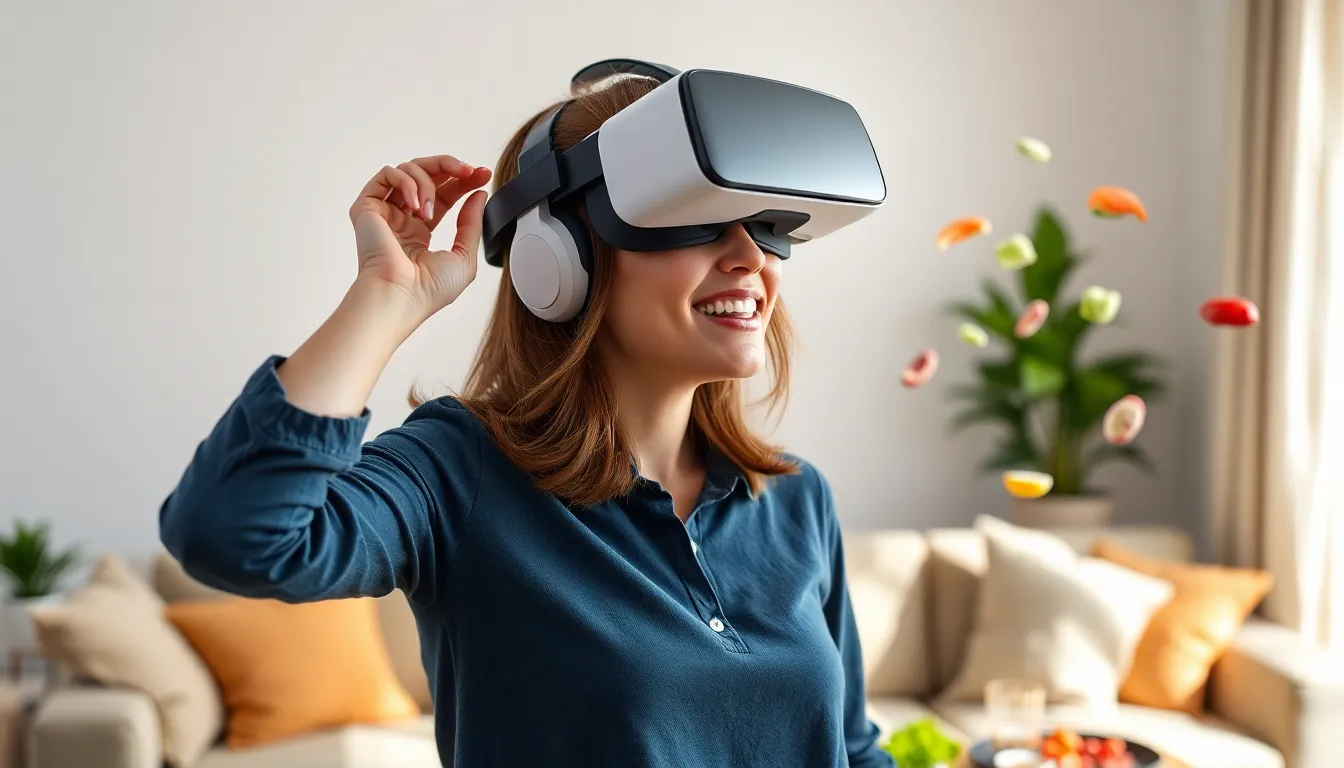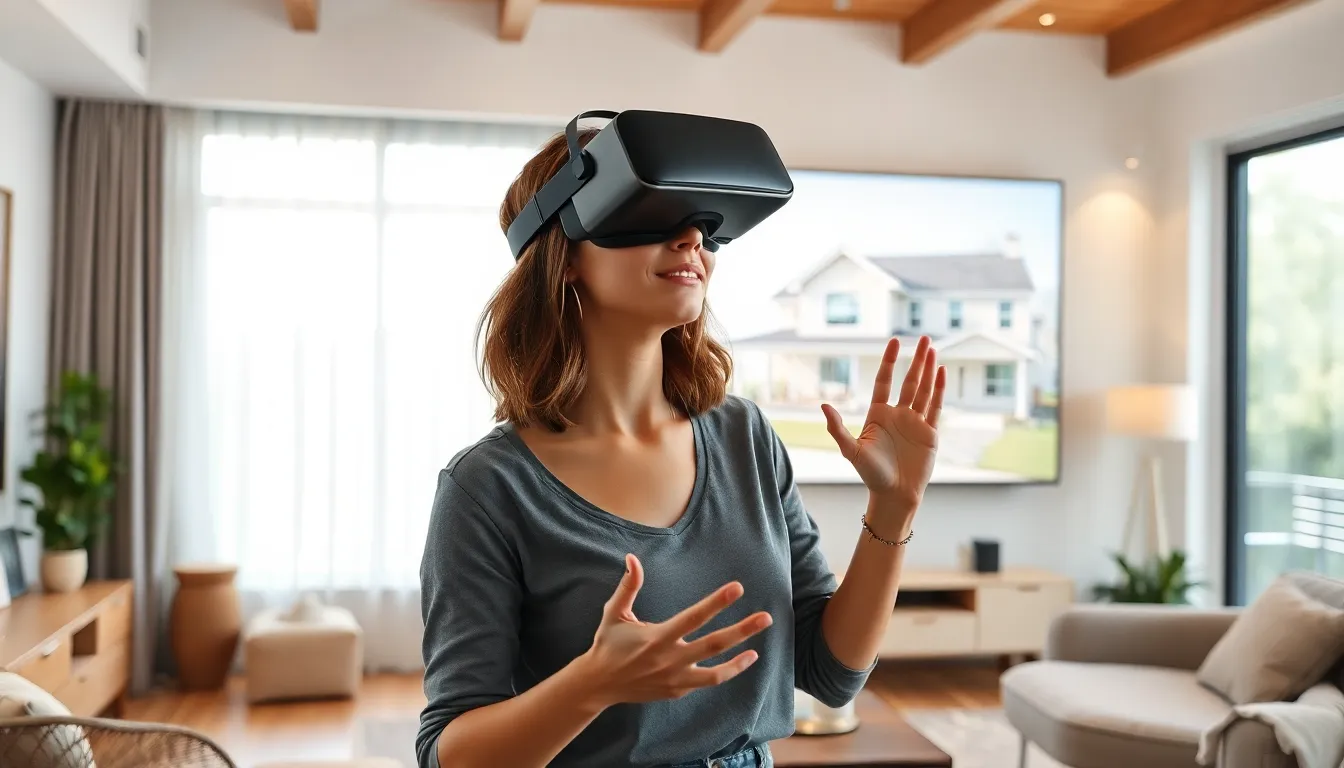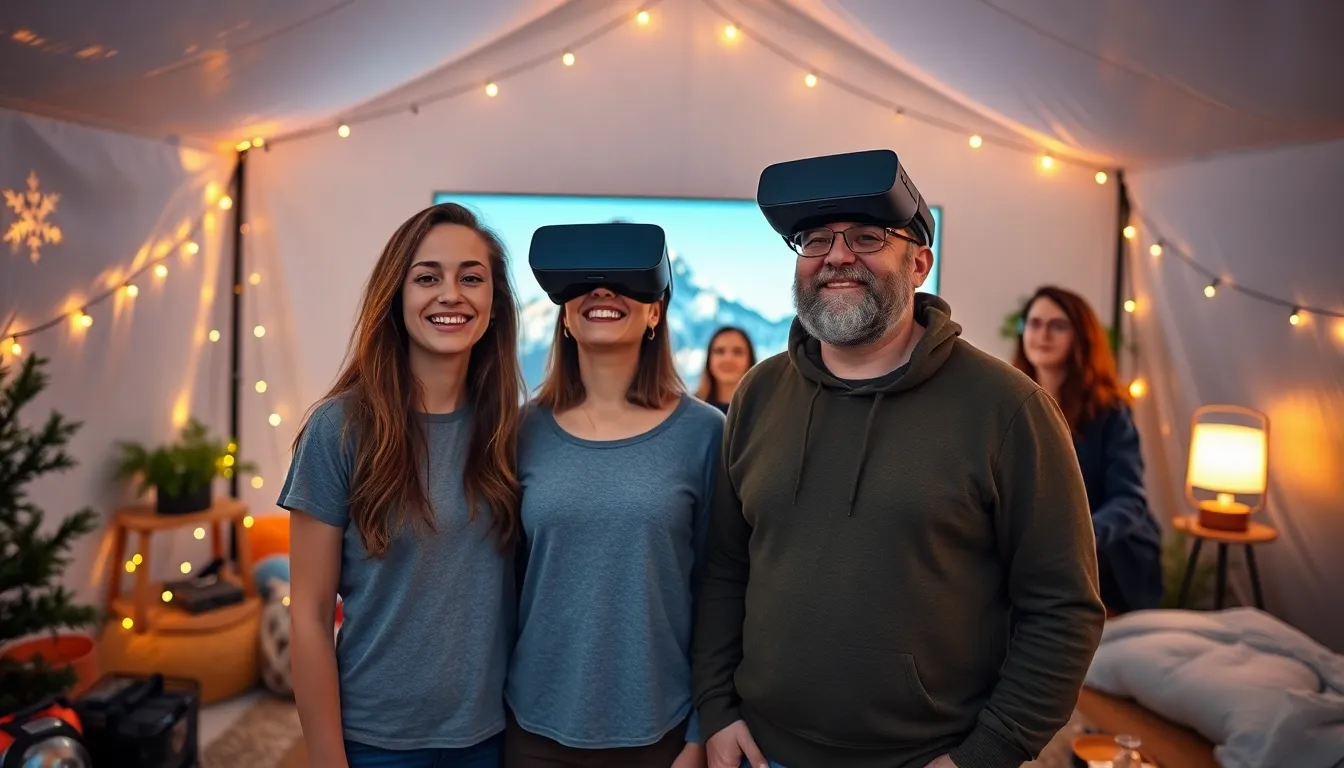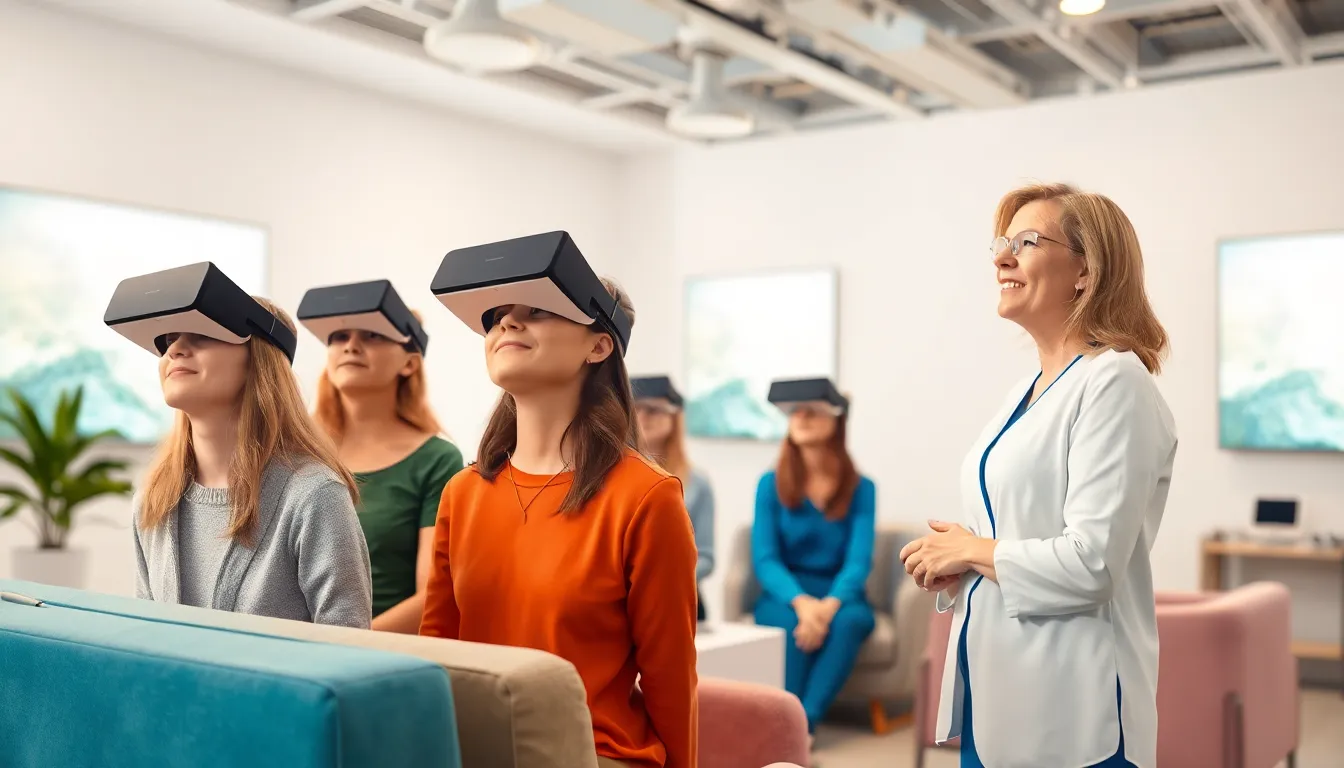Table of Contents
ToggleVirtual reality apps are revolutionizing how people experience digital content. Gone are the days of merely watching a screen; now, users can dive headfirst into immersive worlds that tickle the imagination and challenge the senses. Whether it’s exploring distant galaxies or mastering the art of sushi-making, VR apps offer a ticket to adventures that feel almost too good to be true.
Overview Of VR Apps
VR apps redefine how users interact with digital content. These applications create immersive environments that engage multiple senses. Users can fully immerse themselves in experiences ranging from gaming to educational simulations.
Popular VR platforms include Oculus Quest, HTC Vive, and PlayStation VR, each delivering unique experiences. Users enjoy apps like Beat Saber for rhythm gaming, or educational tools such as Google Earth VR, allowing exploration of the globe from their living room.
Social interactions in VR are increasingly common. Apps like VRChat enable users to meet and interact in a virtual space. Communicating with others while exploring imaginative worlds enhances the social experience significantly.
Entertainment remains a primary focus for VR development. Movie and concert experiences become more dynamic through applications designed for live events, providing users with a front-row seat.
Health and training also benefit from VR technology. Medical professionals utilize VR for surgical simulations, enhancing their skills without risk. Training simulations for emergency responders foster preparedness in realistic scenarios.
As development progresses, VR apps continue to evolve. Improvements in graphics, interactivity, and usability contribute to a growing library of experiences. Users expect more innovative applications that push boundaries and redefine engagement with digital content.
The versatility of VR apps caters to a diverse audience. They allow for wholesome educational experiences, thrilling adventures, and social engagements, solidifying VR’s place in contemporary digital culture.
Benefits Of Using VR Apps
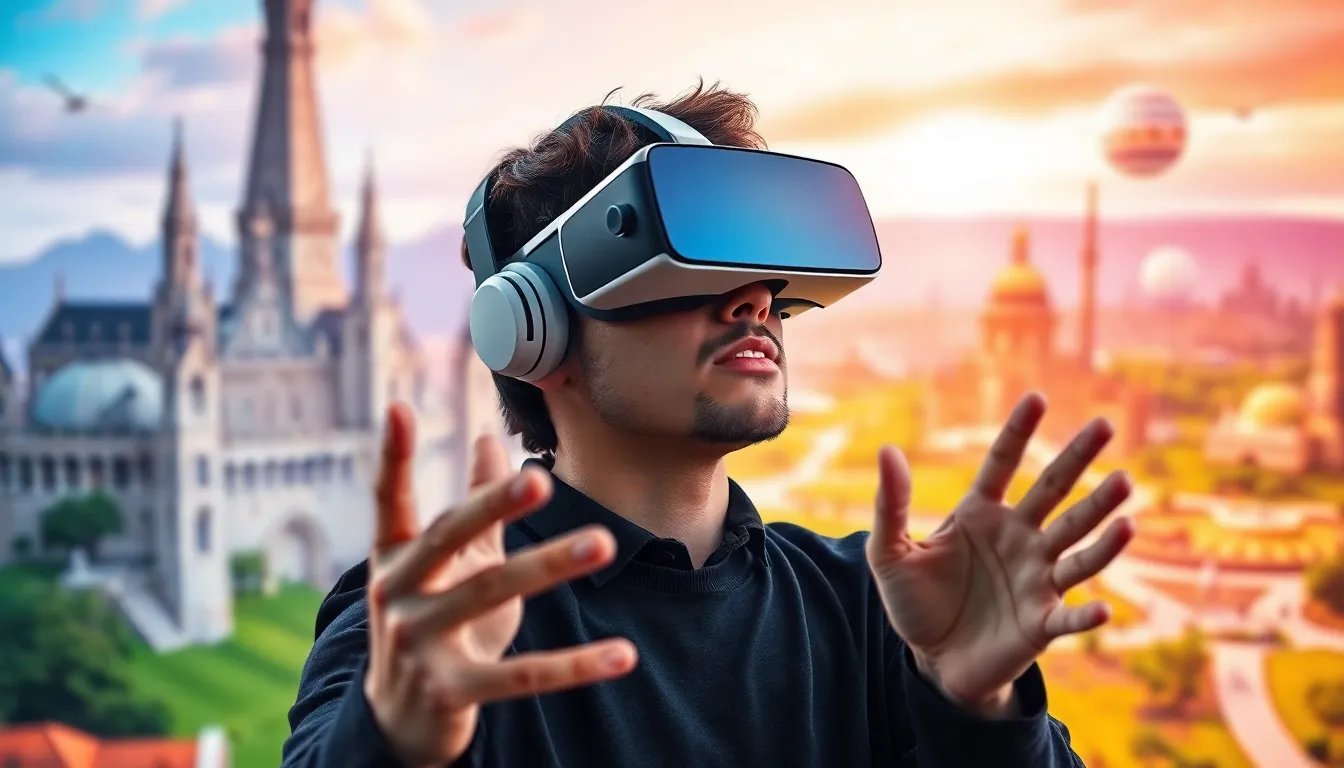
Virtual reality apps offer numerous advantages that enhance both user experiences and interactions with digital content.
Enhanced Immersion
Immersive environments create powerful engagement. Users can step into extraordinary worlds that respond to their actions. Whether it’s strolling through historical sites or battling enemies in a video game, VR apps deliver an unparalleled sense of presence. Enhanced audio and visual graphics heighten realism, making experiences feel almost tangible. Engaging multiple senses fosters deeper emotional connections. Social apps like VRChat allow friends to interact in shared spaces, amplifying the immersive social experience. With platforms such as Oculus Quest and HTC Vive, users explore differently, transforming traditional entertainment.
Improved Learning Experiences
VR apps revolutionize educational approaches by offering interactive lessons. Simulations enable learners to practice skills in realistic settings without risks. Medical students, for instance, can perform virtual surgeries, honing their techniques in lifelike environments. Geography lessons come alive through explorations via Google Earth VR, allowing a playful understanding of global locations. Users engage actively rather than passively absorbing information, which enhances retention. Visualizing complex concepts becomes easier and more intuitive through immersive applications. These innovative learning methods cater to diverse learning styles, ultimately boosting academic performance and skill acquisition.
Popular VR Apps
Virtual reality apps have gained popularity for their diverse applications across gaming, education, and fitness. Users now engage with immersive experiences that reshape traditional activities.
Gaming Apps
Gaming remains a leading category for VR apps. Titles like Beat Saber and Half-Life: Alyx deliver engaging gameplay with stunning graphics and interactive environments. Players can immerse themselves in diverse virtual worlds, enhancing the thrill of gaming. Multiplayer options expand social interactions, allowing friends to collaborate or compete in real-time. Further, gaming apps continuously evolve, introducing new scenarios and challenges, keeping experiences fresh.
Educational Apps
Educational apps leverage VR to create interactive learning environments. Google Earth VR and Engage allow users to explore the universe or attend virtual classrooms. Teachers incorporate these tools into curriculums, making lessons engaging and immersive. Simulations in varied subjects, such as history and science, foster hands-on learning experiences. Students can practice skills safely, enhancing retention and understanding through real-world applications.
Fitness Apps
Fitness apps utilize VR to transform workouts into fun, engaging activities. Apps like FitXR and Beat Saber turn exercise into an enjoyable experience, motivating users to stay active. Participants can join group classes or challenge themselves with rhythm-based workouts. Real-time feedback helps track progress and performance, promoting accountability. Additionally, the immersive nature encourages longer workout sessions, cultivating healthier habits.
Challenges And Limitations
Despite their growing popularity, VR apps face significant challenges and limitations that can impact user experience and accessibility.
Accessibility Issues
Many users encounter barriers due to the high cost of VR headsets, which can limit widespread access. Furthermore, some VR apps require powerful hardware, necessitating significant investment in computers or gaming consoles. Users with mobility impairments may struggle with physical interactions, which restricts their engagement in virtual environments. Additionally, VR experiences can induce motion sickness in certain individuals, creating discomfort and hindering participation. These factors contribute to a digital divide, preventing some demographics from enjoying the benefits offered by VR technology.
Technical Constraints
Technical limitations also pose challenges for VR apps. For example, latency issues can disrupt immersion, as delays between user actions and visual feedback lead to a disjointed experience. Graphics performance varies across devices, impacting visual quality and realism. Furthermore, software compatibility often varies between platforms, limiting the available content for users. Network connectivity can affect online experiences, particularly in multiplayer settings where lag disrupts social interactions. These constraints can influence the overall effectiveness of VR applications, hindering their potential in various domains.
Future Trends In VR Apps
Emerging trends in VR apps showcase the growing sophistication of immersive experiences. Enhanced graphics play a crucial role in realism, enabling users to feel truly present in virtual environments. Interactivity boosts engagement, making activities like gaming and training simulations increasingly captivating.
The rise of social VR platforms continues to reshape how individuals connect. Users engage in shared experiences, transforming social interactions into meaningful connections. Communities form around common interests, providing users with a sense of belonging.
Education benefits significantly from VR development. Interactive lessons empower students to explore complex concepts in engaging ways. Simulations offer hands-on learning without real-world risks, leading to improved academic outcomes.
Healthcare applications expand the utility of VR in medical training. Medical professionals practice through realistic simulations, preparing for high-pressure scenarios. Training programs improve skills and confidence, ultimately benefiting patient outcomes.
Fitness remains a hot area for innovation. VR fitness apps evolve by creating immersive workouts, turning exercise into an enjoyable experience. Users stay motivated through gamification, promoting healthier lifestyles.
Affordability will drive VR app adoption. As hardware costs decline, more users gain access to VR experiences. Compatibility with diverse devices removes barriers, broadening potential audiences.
Advancements in accessibility address user limitations. Developers focus on creating solutions for those with mobility impairments, ensuring everyone can partake. Motion sickness management techniques become increasingly effective, improving comfort during use.
Technological progress also focuses on reducing latency issues. Seamless multiplayer interactions enhance social experiences, creating shared moments that feel organic. These advancements pave the way for broader acceptance and integration of VR apps in daily life.
The evolution of VR apps is reshaping how individuals interact with digital content. With immersive experiences that engage multiple senses users are discovering new ways to learn connect and entertain themselves. As technology continues to advance the potential for VR applications expands across various sectors from gaming to education and healthcare.
While challenges like accessibility and technical limitations persist ongoing innovations promise to enhance user experiences. As affordability improves more people will likely embrace VR technology leading to a more inclusive digital landscape. The future of VR apps looks promising and their impact on daily life will only grow stronger as they become more integrated into everyday activities.

